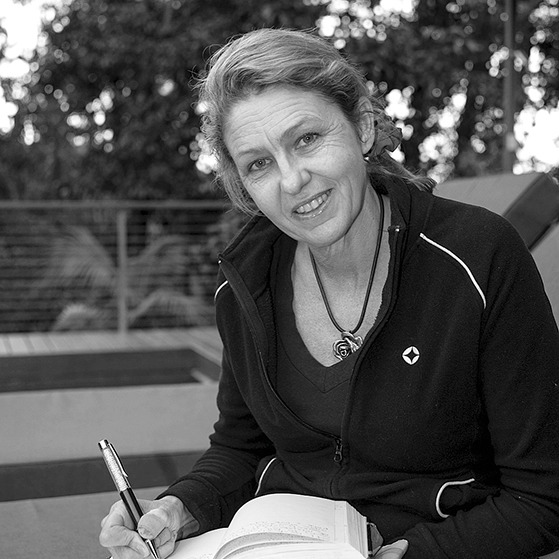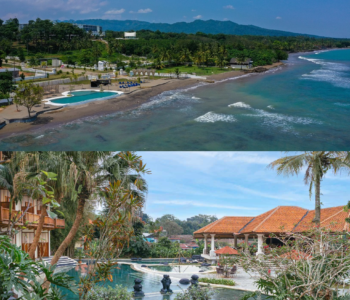Every May, a vibrant festival is held at the UNESCO World Heritage Site of Borobudur, the world’s largest Buddhist temple, located in Central Java. Buddhists from the far reaches of Asia gather to celebrate the holy festival known as Waisak, celebrating Buddha’s birthday.
“I used to be a Thai Airways flight attendant,” the monk said, as he tended to his flower arrangement. He adjusted his orange robe and added, “That was seven years ago. Now, I am a monk. I have few possessions, and it is liberating. I realized I don’t need them,” he said with a beaming smile.
“I am very happy. Here, have a flower,” he said, handing me an orange marigold. “Come back at 5.00pm. We will have finished our flower duties by then, and this area will become the lantern area. We will release 1,200 paper lanterns tonight. We only allow 300 people into this special area, so get here early for your ticket.”
As the evening drew towards the midnight hour, delegations of monks were beginning their preparations to hold a mass prayer session. This would be followed by the lantern release under the full moon – lanterns covered with hundreds of hand written messages from the 300 people who choose to stay past midnight.
Waisak Day has been celebrated as Buddha’s birthday, but it honours more than that. It acknowledges the 3 significant stages of Buddha’s life; his birth, his enlightenment, and parinibbana (ultimate freedom) – his passing.
The atmosphere in Borobudur was one of happiness and joy amidst a multicultural mix of nationalities and colour. I met people from Sri Lanka, Myanmar, Singapore and Thailand, many of whom are dressed in their national costumes. People came from as far as China, Japan, Nepal, Tibet, Vietnam, and Laos. Being a westerner, I was definitely in the minority. However, I seemed to attract a lot of attention and became a beacon for conversational English. A stream of young people approached me throughout the day and night eagerly wanting to practice their English. I was more than happy to oblige. I also met many Indonesians of Chinese origin. Most were representative of Walubi, the Indonesian Buddhist organization who managed the event.
As the late afternoon morphed into the evening, there were many magical moments carried in an air of mantras and rhythmic chanting accompanied by massages. I was happy to discover the orange-shirted massage team who provided fabulous, energizing and revitalizing massages between 5.00pm and 11.00pm on the grassy banks of the lantern launching area – the perfect opportunity to re-boot before the midnight hour. I cannot think of a more novel place to have a massage, serenaded by the sound of soft robes passing and distant prayers reverberating under the shadow of Borobudur, looming high into the night sky in its 9th-century glory.
The Sailendra Dynasty built this colossal monument over 1,000 years ago. The mystery of its origins lay buried for some 600 years under volcanic ash and jungle vegetation and was discovered by a joint British and Dutch expedition in 1814. The Mahayana Buddhist faith once reigned supreme in these parts of Java and many significant, albeit lesser sized temples can be found dotted around the region, one of them being Mendut.
Mendut Temple is 4 kilometres from Borobudur and was the starting point for the procession led by a booming, big brass band complete with baton-twirling girls in short skirts. Monks followed under a sea of brightly coloured umbrellas, dotted with tall flags, ornate fruit and vegetable offerings, floats, and messages of peace. As they made their way to the gates of Borobudur the smiling, waving crowds gathered enthusiastically along the route and hailed, cheered and whistled as a sea of crimson, gold and orange clad monks sailed past with serene expressions. Some monks were carried on huge golden chariots and sprinkled holy water onto the crowds below.
Tibetan monks in dark red robes walked beside female Chinese Buddhist priests in pure white, and the whole event reverberated with love, peace, and happiness to the beat of big booming drums, tinkling prayer bells and street actors and entertainers.
Waisak proudly supports the freedom of religious expression as stated in the Constitution of Indonesia, the nation with the largest Muslim population in the world. As Indonesians embrace, honour and recognize the six noted religions – Islam, Hinduism, Buddhism, Confucianism, Catholicism, and Protestantism, there is no better example of Indonesia’s unity in diversity.
This year Waisak Day falls on May 22. On the eve of this day, when the moon is full on the fourth month of the Buddhist lunar calendar, a unique event unfolds, so bring your flowers and candles and make your way to Borobudur, Central Java.
Waisak Information
May 19 – Sacred flame ritual. Monks light a metal torch from a natural gas flame that burns in the village of Grobogan, Central Java. May 19 – Holy water ceremony at the sacred spring in Umbul Jumprit. May 21 – Main parade and the ritual at Borobudur including the release of thousands of lanterns at midnight. May 22 – Waisak falls before dawn
Travel arrangements: ATA Travel Agent, Yogyakarta Ibu Malia – will make a tailor made package to suit your budget E: ata@indo.net.id
Stephanie Brookes is a travel writer and blogger with tales from Indonesia and beyond.
www.travelwriter.ws
http://www.facebook.com/stephtravelwriter
www.instagram.com/stephtravelwriter
Author –“Indonesia’s Hidden Heritage; Cultural Journeys of Discovery”
David Metcalf is a photographer and runs cultural photography tours in Bali, Kalimantan, USA tribal lands, Toraja, Sumba, Japan and Vietnam
www.davidmetcalfphotography.com
www.instagram.com/davidmetcalfphotography
http://www.youtube.com/user/DayakDave















